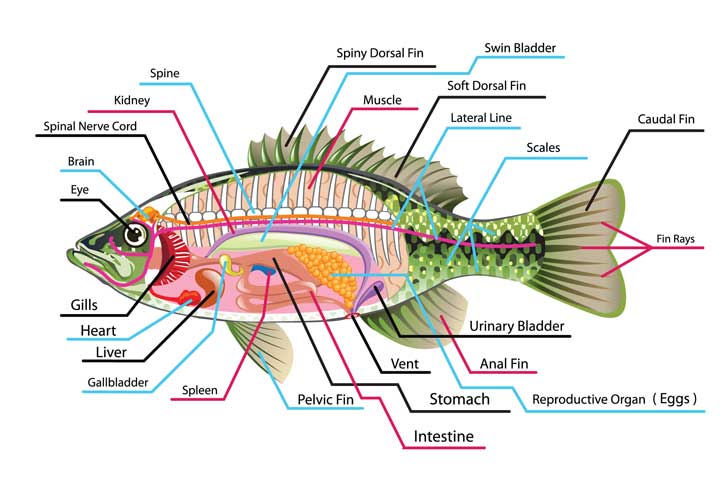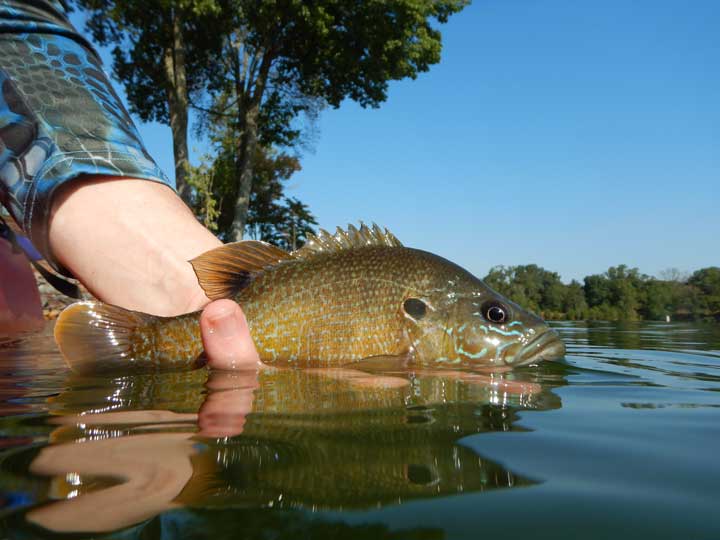Fishing is one of my favorite outdoor pastimes, and there’s nothing like catching and preparing the catch of the day for a delicious fireside meal. When I’m fishing in freshwater creeks or lakes, I catch a lot of bluegills. I’ve always wondered, can you eat bluegill?
I know the benefits of eating freshwater fish, but I wanted to find out if bluegill provided health benefits and whether it could make a great campfire dinner.
Can Humans Eat Bluegill?
Through my research and experience, I found that bluegill is a non-toxic, tasty, and nutritious fish species, making for the perfect dinner after a long day of fishing. Bluegill fish are common across North America, found in weed beds and shallow waters.
Bluegills are a staple fish to eat during camping trips. They’re easy to catch, fillet, and cook very well over an open-flame campfire. Bluegills are also a very mild-tasting fish. If you’re not a big fan of seafood, this fish won’t overwhelm your taste buds.
Is Bluegill Healthy to Eat?

Bluegill is a type of sunfish, which is nutritious and delicious to catch and eat. In general, three ounces of bluegill is 97 calories. This type of fish is high in protein, and low in carbohydrates and cholesterol. While you’d want to benefit from fish oils when eating a fresh catch, Bluegills are actually quite lean. They have a lower Omega 3 amount compared to other freshwater fish like herring and pink salmon. That being said, they still have a fair amount of fish oils and are a healthy meal choice.
This freshwater fish is also high in essential micronutrients. In a three-ounce serving of bluegill, your body will enjoy:
- 1.3 milligrams of iron (essential to building red blood cells)
- Two micrograms of vitamin B12 (essential for healthy red blood cells)
Can I Eat Bluegill Fish Organs?
Keep in mind that the above nutrient levels are measured from the bluegill fish meat. Eating whole fresh fish with organs and guts intact is becoming a popular outdoorsmen’s activity, but I avoid it because I don’t really like the flavor.
Pollutants found in freshwater throughout the world collect in fish skin, organs, and fat. Chemicals like polychlorinated biphenyl (PCB) and dioxin are harmful to human health if ingested in high quantities. Mercury also accumulates in fish eyes and brains. Generally, the bigger the fish, the higher the amount of heavy metals can be found. Even cooking the entire fish won’t entirely eliminate these chemicals if the organs aren’t removed.
These three chemicals and additional pollutants are not safe to eat, especially if you are pregnant. The Food and Drug Administration (FDA) and Environmental Protection Agency (EPA) advise anglers to clean their fish and cook it well before consumption.

Does Bluegill Taste Good?
If you like sunfish, chances are you will enjoy bluegill. I think that bluegill is one of the best-tasting freshwater fish. They don’t have an overwhelmingly salty or fishy taste, so those who aren’t big fans of seafood can enjoy a fireside meal, too.
Bluegills also have a firm and flaky flesh that gives the meat more flavor. They only eat small fish and insects, which keeps their taste mild when you eat them.
Keep in mind that the best-tasting freshwater fish come from clean waters, as dirty, murky bodies of water give native fish a muddy taste.
How Do You Prepare Bluegill to Eat?
There are two methods to cook bluegill in the wild. You can cook them in a pan over an open flame or cook them on a stick like nature intended.
In a Pan Over a Flame
This method requires a little preparation. Before your trip, remember to pack the following:
- Large skillet
- Sharp knife
Before you can start cooking fish, you need to clean them. Depending on your preference, you can scrape off the scales. Start from the tail and work your way toward the head. Keep removing scales until the fish skin is smooth.
When you’re done descaling, remove the head with your knife. Cut the head off from just behind the fish’s gills.
Next, you need to gut the fish. Again, with your sharp knife, make a cut on the belly from the tail up to where you just removed the head. Open the bluegill so that it resembles a butterfly with both sides splayed out. Remove all the organs and cut off the tail and fins.
Once the bluegill is cleaned and gutted, you can start cooking. Heat your skillet over your blazing campfire. Pan fry the fish for a few minutes on each side, and enjoy your delicious boneless fillet after a long day of fishing.
On a Stick
The more primitive method of cooking bluegill only requires a knife for gutting the fish and a stick you can find in nature. To cook bluegill on a stick, you want to keep the fish whole and the skin intact.
Remove the head with your knife and gut the fish. Use a sharpened stick to puncture through the flesh from the open end to the tail. Then, you can cook the fish over hot embers. Avoid cooking it over a flame and remember to turn the stick frequently to ensure even cooking.
Where Are Bluegills Found?
Is your mouth watering thinking of finding some delicious bluegill for a campfire dinner? Fortunately, this fish is found in numerous places across North America and likely even your favorite fishing hole. You can find them in freshwater ponds and lakes as far north as Canada and as far south as northern Mexico.
Bluegills enjoy quiet streams and small lakes. Look for them under submerged vegetation during your fishing expedition.

Summary
Bluegill is a type of sunfish found in cold water across numerous lakes and ponds in North America. They’re a healthy and nutritious meal or snack during any fishing and camping trip. Bluegill is a mild-tasting fish but packs a lot of tasty flavors in their meat. Look out for them in shallow freshwater bodies in North America.




